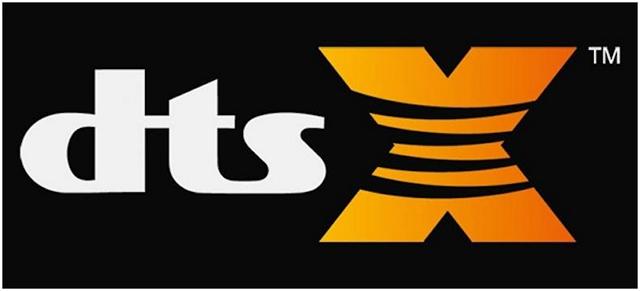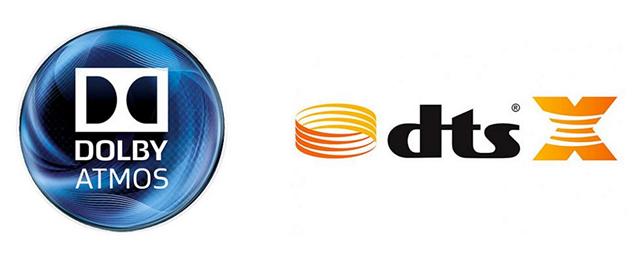DTS:X vs Dolby Atmos: Ultimate Surround Sound Format War
With the advent of 3D surroundings sound, immersive audio has moved into a whole new world of realism past creating the all-time possible sound experience for movies, TV, music and gaming. Coupled with 3D videos, these new and emerging 3D audio formats similar DTS:X, Dolby Atmos and Auro 3D are creating invigorating experiences that's making movie-going more than exciting than ever earlier. However, with the emergence of multiple 3D surround sound formats, many audiophiles and dwelling house theater enthusiasts are now more confused than ever before nigh the pros and cons of each platform. Then, in case yous too are wondering near which way to go, you should take a look at our detailed comparison between DTS:10 and Dolby Atmos to get a clearer picture about some of the most of import similarities and differences betwixt the two technologies.
What is DTS:X?
Designed by California-based DTS Inc., DTS:10 is an "object-based" audio codec that aims to create a multi-dimensional sound past adding a pinnacle element to traditional surround audio for added sonic accuracy. What that means in essence, is that with DTS:Ten-encoded tracks, the sound of birds chirping on a tree will actually feel like its coming from up in a higher place, provided, you have a DTS:Ten compatible receiver that can interpret these "objects" on the fly to suit any given speaker layout. The technology has its roots in the 3D surround sound format developed by the Santa Ana, California-based sound engineering company SRS Labs, which was acquired by DTS in 2012. The DTS:X format uses the open and royalty-free Multi Dimensional Audio (MDA) platform that allows audio engineers to isolate each individual sound object and, control their placement, movement and volume separately irrespective of the channel assignment or speaker layout. To become a more than in-depth perspective on DTS:X, you tin cheque out our detailed article on the subject.

What is Dolby Atmos?
Much like DTS:X, Dolby Atmos is also an "object-based" sound codec that adds to a standard 7.1 aqueduct setup past calculation a pinnacle element to sound. The technology allows audio engineers to direct specific sounds to any particular area of the room with a loftier degree of accuracy, because, dissimilar traditional setups, sound designers don't have to specify channels for a particular audio. Instead, they tin only signal where the sound originates from, and the Atmos setup will just translate that metadata to give listeners a more than immersive and realistic sound experience. To know more about Dolby Atmos, you tin check out our earlier article that tackles the subject area in more detail.

DTS:10 vs Dolby Atmos: Similarities
As yous've already realized by at present, there are more similarities than differences betwixt DTS:X and Dolby Atmos. From a sound engineer'southward point of view, both support lossless coding for the best audio quality, just are also uniform with lossy compression for streaming services that don't have the luxury of eating up a lot of bandwidth to deliver the absolute highest quality audio. Both tin also "upconvert" legacy soundtracks that are not 'object-based'. From a consumer's point of view, y'all'll need an A/V receiver or a preamplifier with built-in firmware support to savor either of the formats, but to get the full effect, you'll need content that has been encoded with that particular format.

DTS:X vs Dolby Atmos: Differences
While the DTS:X and Dolby Atmos accept more things in common that not, at that place are nevertheless a few key differences between the ii. Unlike Dolby Atmos that consists of a 7.1 channel bed with 4 superlative speakers, one of the main features of DTS:X is its flexibility. While Dolby recommends a standard v.1 or vii.1 channel surround audio speaker system aslope at least one pair of either 'in-ceiling' or 'upward-firing' Atmos-enabled satellites, DTS:X is "location agnostic" and, doesn't require any specific speaker arrangement, supporting up to 12 channels irrespective of the number of speakers in the setup. The receiver's auto-calibration characteristic and object-based audio processor actually get to decide the best output channel for each item audio "object".
Hardware/Firmware Requirements
As mentioned already, y'all'll need an A/5 receiver or a preamplifier with built-in firmware support to play either of the two formats. Thankfully from the consumer point of view, one of the best things about the DTS:X vs Dolby Atmos debate is that you lot're not in an either/or situation. You tin can, potentially, enjoy both formats with the aforementioned set of speakers powered by the verbal same receiver, seeing as most receivers offer both Dolby Atmos and DTS:Ten processing. OEMs similar Onkyo, Pioneer, Yamaha, Klipsch, Definitive Technology, Marantz, Integra etc. already accept several receiver and speaker models that are compatible with both technologies, and they've besides been rolling out firmware updates to many of their Atmos-only models to make them uniform with DTS:Ten.
While Dolby Atmos encodes lossless Dolby TrueHD soundtracks on Blu-ray discs to create 3D audio, DTS:X does the same to a lossless DTS-Hard disk Primary Audio soundtracks to get the aforementioned effect. So just like Dolby Atmos audio tracks are backwards-uniform with Blu-ray players capable of playing Dolby TrueHD, DTS:X soundtracks are too backwards-compatible with just almost whatsoever Blu-ray player capable of playing DTS-HD Master Audio soundtracks bailiwick to firmware updates. What information technology ways in essence is that just about all Blu-ray players manufactured over the last decade will be able to requite you the full event of DTS:10 and Dolby Atmos. If you lot've bought your A/V receiver at any time in the recent past, you should cheque if your vendor has already fabricated the new, DTS:X-compatible firmware available on its website.
Devices and Available Titles
As mentioned already, there are already an insane number of options available for you if you lot're looking for A/Five receivers or domicile theater speakers compatible with both Dolby Atmos and DTS:X. It's easy to implement both technologies within the same systems, so most OEMs back up both formats in their devices. As mentioned already, if you accept a standard 5.one or 7.1 channel setup from the past decade, chances are, information technology will exist compatible with both formats subject to new firmware update(s). In case you're looking to setup an all-new home theater, yous tin can go over to Amazon to check out some of the receivers and speakers uniform with both DTS:Ten and Dolby Atmos.
Having corking hardware is merely the first pace towards enjoying the perfect home theater experience, but unless yous accept source material, there's very little that all those expensive gadgets can practise. That being the case, y'all demand to get Blu-rays with Dolby Atmos and DTS:X soundtracks to relish your high-stop home theater. Some of the movies that come up with Dolby Atmos sound include Mad Max: Fury Road, Mission Incommunicable: Rogue Nation, American Sniper, Transformers: Age of Extinction, and Teenage Mutant Ninja Turtles, amid others. Y'all tin can bank check out some of the other Dolby Atmos movies by clicking here.
As for DTX, dozens of movies released by major Hollywood studios similar Paramount, Universal, Lionsgate etc. are encoded with the new format, including well-known titles, such as Apollo thirteen, Snow White and the Huntsman, Fifty Shades of Grey, The Bourne quadrolody (Identity, Legacy, Supremacy and Ultimatum) and Zoolander 2, among others. Click hither to bank check out some of the other available DTS:10 titles on Amazon.
Run into ALSO: 10 Best Dolby Atmos Speakers You Can Buy
DTS:X vs Dolby Atmos: The Future of Immersive Audio
While its too early to anoint somebody the winner in the DTS:X vs Dolby Atmos debate, information technology isn't really like the earlier BetaMax vs VHS or Hard disk drive-DVD vs Blu-ray battles that had to end in a loss for i side or another because of the inherent lack of compatibility between the formats. With most consumer-course A/5 equipment compatible with both technologies, it volition come down to which 1 is more than widely-adopted by the entertainment industry. As of at present, both formats have seemingly received some degree of back up from the large Hollywood studios, but information technology will be interesting to see who comes out on top when the dust settles after what promises to be an intriguing battle between the two preeminent 3D surround sound formats in the years to come. As a consumer, though, do you prefer one format over the other? If so, or if you have whatsoever opinion on the big DTS:X vs Dolby Atmos debate, feel free to sound off in the comments section below, because we dear hearing from y'all.
Source: https://beebom.com/dtsx-vs-dolby-atmos/
Posted by: johnstonhoot1998.blogspot.com


0 Response to "DTS:X vs Dolby Atmos: Ultimate Surround Sound Format War"
Post a Comment